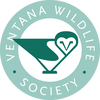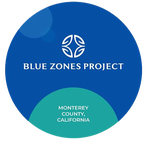Loading bio data
Pinns (286), named after Pinnacles National Park, was captured in March 2009 after biologists noticed he was suffering from the effects of lead poisoning. Pinns (286) was sent to the LA Zoo for treatment, but veterinarians were not able to save him. Pinns (286) will be remembered for his leadership at Pinnacles National Park and for establishing the first nesting territory in that region in over 100 years.
Pinns (286) and his cohort were released at Pinnacles National Park - the first release at that site. But in their first spring, biologists noticed that several condors were perching on power poles. Power poles pose a huge safety risk for large birds. If a condor touches both metal posts at either end of the crosspiece simultaneously, then a huge amount of electricity travels through them, electrocuting them instantly.
The condors at Pinnacles National Park who were the "ringleaders" and perched frequently on power poles were permanently returned to captivity. Pinns (286) was a follower - perching on crosspieces only after other condors were already there - so it was decided that he could have another chance in the wild. He was released for the second time in Big Sur as we hoped that a new environment would encourage him to avoid his old dangerous patterns. We are happy to say that he was never seen perched on a crosspiece after his Big Sur release.
Pinns (286) and his cohort were released at Pinnacles National Park - the first release at that site. But in their first spring, biologists noticed that several condors were perching on power poles. Power poles pose a huge safety risk for large birds. If a condor touches both metal posts at either end of the crosspiece simultaneously, then a huge amount of electricity travels through them, electrocuting them instantly.
The condors at Pinnacles National Park who were the "ringleaders" and perched frequently on power poles were permanently returned to captivity. Pinns (286) was a follower - perching on crosspieces only after other condors were already there - so it was decided that he could have another chance in the wild. He was released for the second time in Big Sur as we hoped that a new environment would encourage him to avoid his old dangerous patterns. We are happy to say that he was never seen perched on a crosspiece after his Big Sur release.





